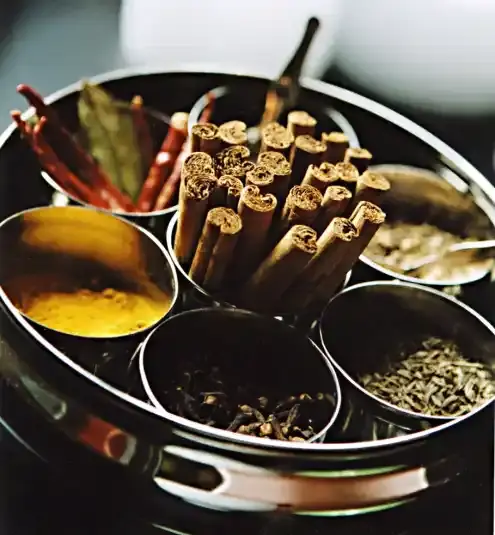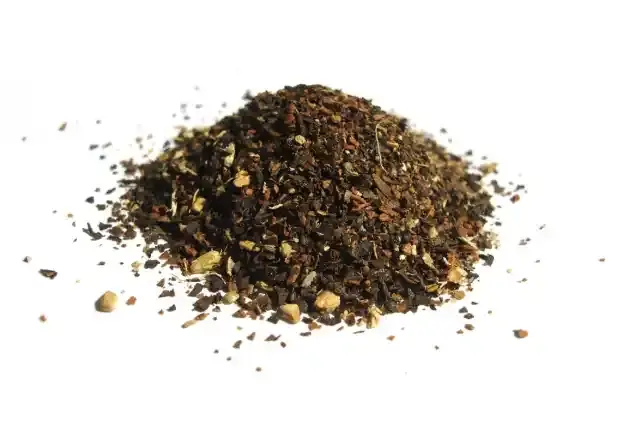Falling in love with tea - creating comfort in every sip: a comforting Indian tea
Resorting to warm drinks to feel comfortable with the cold weather is self-evident to me. Rainfall warnings, cloudy skies and fresh air make me crave a hot cup of tea and a plate of crispy pakora (in Hindi, for all kinds of pancakes). The pakora will be a story for another day. Today, let's all focus only on tea, a beverage that is consumed in abnormal quantities every day, nationwide, which sometimes makes me wonder why it has not yet been declared the national drink. No matter how good you are at cooking (or not, no judgment here), knowing how to make the perfect cup of tea can be a nice cultural addition to your arsenal. As a kitchen beginner, tea can become your new best friend. It requires almost no cooking skills, little effort, and about 15 minutes to make the perfect cup. Even before we learn how to make our flat bread called roti in a perfect round shape, the perfect cup of tea is the first thing we learn to make in an Indian home, historically.
Recommend
Show key points
- Tea plays an integral role in Indian daily life and culture, being consumed in large quantities across the country.
- Making the perfect cup of tea is considered a fundamental skill in Indian households, often learned before basic cooking like making rotis.
- Tea is never served alone in India; it’s typically accompanied by snacks that vary by region, occasion, and time of day.
- ADVERTISEMENT
- Indian tea, commonly known as "chai", should never be called "chai tea", as the term "chai" already means "tea".
- A basic tea recipe involves simmering milk, water, tea leaves, sugar, and optional spices until the mixture reaches a rich dark color.
- Both fresh herbs and dried spices like ginger, cardamom, cloves, and mint are used to enhance the flavor of chai.
- The type of tea leaves and steeping time affect the taste and strength of chai, distinguishing regular tea from masala chai.
Every home has a specific person to make the cup of tea in the family and the person who makes the perfect cup of tea. In our house, this person was me personally, for a long time, until one morning (fortunately) my brother took over. Tea making can thus become a serious matter. From tea stalls and vendors offering you tea cut into small plastic cups/clay cups/steel cups to each region that adds its own twist to the drink, India's tea culture is rich, fun and serious.
Some things you (and the world) should know about tea

Tea is never served alone: served with a side dish of something sweet, salty or both (this can be the subject of a completely different article in itself). Anything can become a side dish, depending on when it is served and the occasion. Teatime snacking can become a national sport, and I'm not kidding.
Anytime is tea time: Apart from morning tea and afternoon breaks, tea lovers will never (and I mean, seriously, never) refuse to drink tea. It is part of our day, routine, life and family. Yes, we carry tea with us everywhere, or we find Tabri (an Indian term for tea cart) and befriend Chai Wala Bahaya (tea cart man).
"Chai" means "chai": Finally, for the love of God (or any higher power you believe in), it is only called chai. Not chai tea; just chai. The word is a literal translation of both Hindi and Mandarin (cha). Naming it latte chai tea is blasphemy. I mean, why do you call it "tea tea coffee?" latte is coffee – with milk, if I'm not mistaken. Do you want to look like you know what you're talking about? Just call it chai.
How to make the perfect cup of tea

Prepared using one part milk and two portions (or one part, depending on your preferred consistency) of water, tea/powder leaves, sugar and spices (in the spicy tea version), it's more about technique than following the recipe. However, for a perfect cup, add milk, water, tea leaves, spices (or tea seasonings) and sugar to a small saucepan and bring to a boil. Let the mixture ferment until the color begins to deepen and the aroma of delicious spices and tea spreads in your kitchen. A rich dark brown color is what you're aiming for, and that's it. Tea is ready. Drain into the cup and enjoy with some sweet chips/crackers or some sweet and savory biscuits. I told you, it's really that simple! Contrary to what Starbucks made you think, it doesn't start with a weird-flavored drink. When talking about flavors, let's now understand spices, why we use them and how to customize flavors according to personal preference. There are fresh herbs and dried spices that can be incorporated into tea. Trying it can help you understand a lot about the strengths and flavor features of each for future cooking.
Fresh herbs and spices include grated ginger, grated turmeric, holy basil (Indian type), mint, grass lemon, damask rose petals, and soaked almond paste.
For dried spices, cardamom, nutmeg, cinnamon, cloves, saffron, star anise, eunutmeg seeds, bay leaf, dried ginger, black pepper, fennel seeds, dried damask rose petals, dried grass lemon, and tea masala (a blend of selected dry spices) can be used.
We must also not forget about the type of tea used. Assam tea, Darjeeling tea, Nilgiri tea or a custom blend of tea leaves (and powder/dust) are usually used to make tea. A quick search will give you multiple options to choose from, each with a description of the origin, strength, and flavor of the tea itself. The strength of tea is determined by the amount of time that tea and spices are soaked in milk. The depth of color is a good indicator of how strong tea is, or as we say in Hindi, how "kadak" tea is. Finally, let's also take a look at the difference between tea and masala tea. As the names suggest, one is brewed with spices (fresh or dried), and the other is just tea and sugar. When ordering tea, at a restaurant or otherwise, it's a good idea to specifically order the type you prefer to drink.








